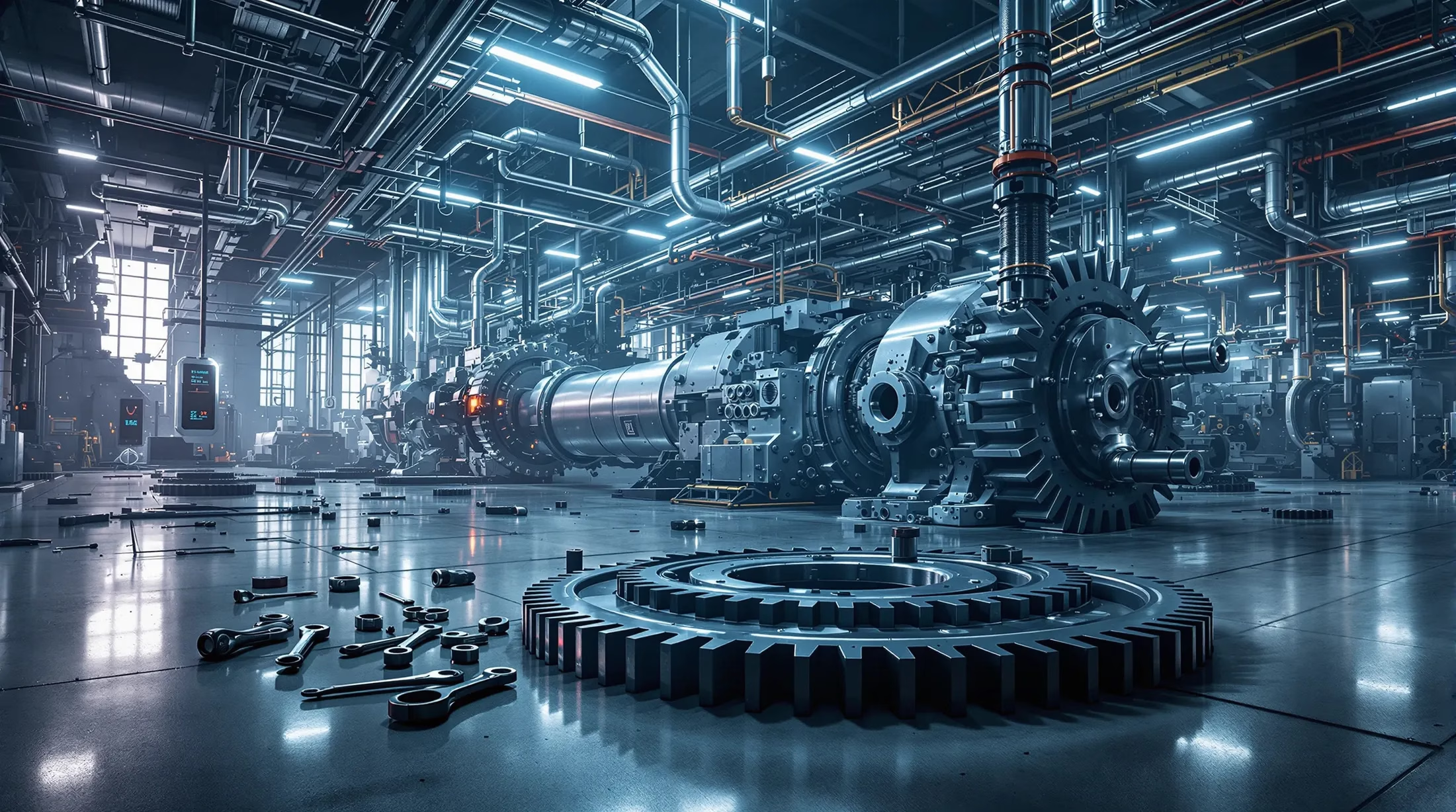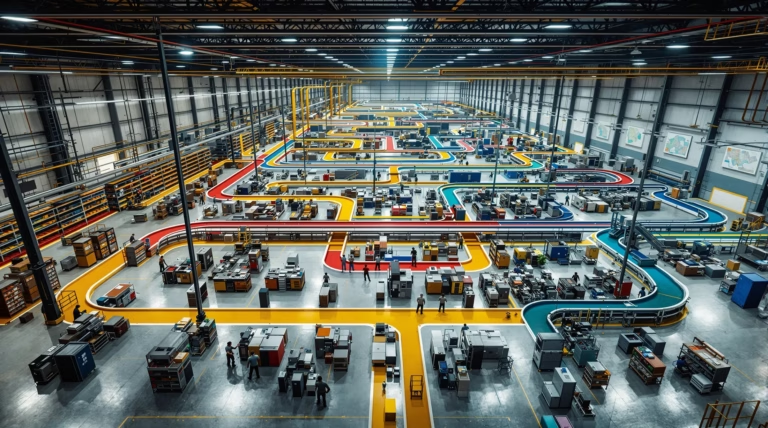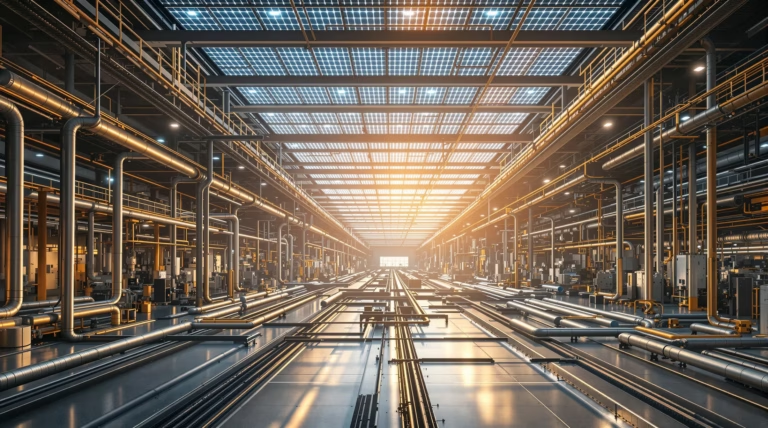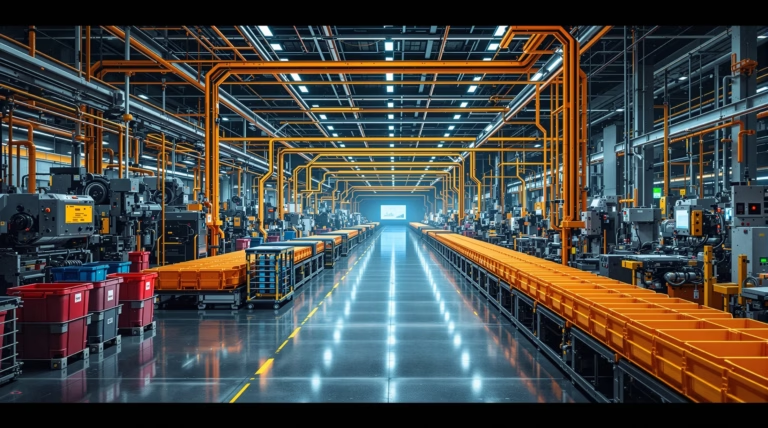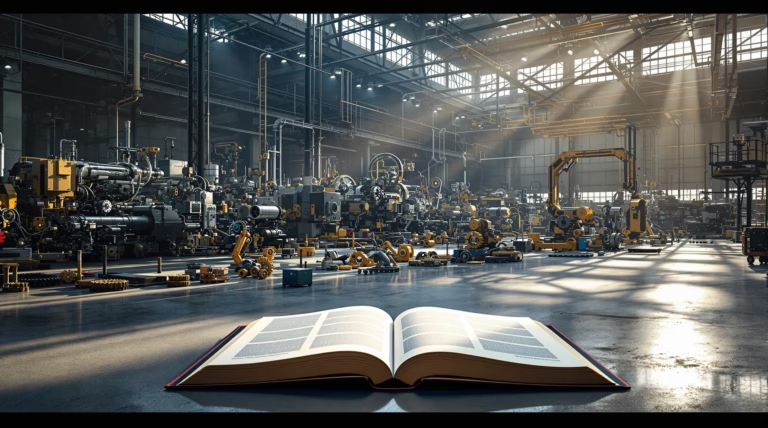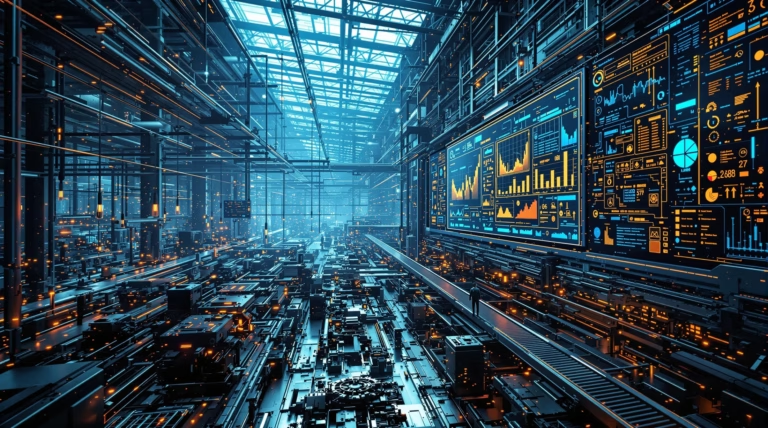Factory Maintenance: Essential Strategies for Optimal Performance
In today’s manufacturing landscape, implementing effective factory maintenance strategies is crucial for achieving operational excellence and maintaining competitive advantage. Let’s explore how proper maintenance practices can transform your manufacturing facility’s performance and bottom line.
Understanding Factory Maintenance
Factory maintenance, or industrial maintenance, encompasses all activities designed to maintain manufacturing assets in optimal operating condition. This strategic process directly impacts production capacity, product quality, and operational efficiency. Modern maintenance practices go beyond simple repairs, incorporating advanced planning and execution methodologies to ensure maximum equipment performance.
When properly implemented, comprehensive maintenance practices deliver multiple benefits:
- Reduced unplanned downtime
- Extended equipment lifespan
- Optimized resource allocation
- Increased productivity
- Enhanced workplace safety
- Improved product consistency
The Importance of Factory Maintenance
Production efficiency fundamentally relies on equipment reliability. When machines operate at peak performance, production targets are consistently met while maintaining high product quality. Equipment failures not only disrupt production but also create potential safety hazards and quality issues.
In equipment-intensive industries such as manufacturing, automotive, oil and gas, and aviation, maintenance costs typically represent 15-40% of operational budgets. Well-maintained equipment provides several long-term advantages:
- Lower energy consumption
- Reduced replacement parts requirements
- Enhanced operational safety
- Extended asset lifecycles
- Maximized return on capital investments
Key Components of Factory Maintenance
A comprehensive maintenance program requires several integrated components working together effectively:
| Component | Description |
|---|---|
| Maintenance Planning System | Balances proactive and reactive approaches based on equipment criticality |
| Performance Measurement | Tracks metrics like OEE, MTBF, and maintenance costs |
| CMMS Implementation | Centralizes work orders, inventory control, and maintenance history |
| Skilled Personnel | Maintains and operates equipment effectively |
| Documentation System | Records procedures, maintenance history, and equipment specifications |
Exploring Maintenance Strategies
Effective factory maintenance requires a strategic combination of methodologies tailored to specific operational needs. A CMMS serves as the foundation for these strategies, enabling efficient task management and data-driven decision-making. The selection of appropriate maintenance approaches depends on asset criticality, available resources, and production requirements.
Preventive Maintenance: Proactive Approach
Preventive maintenance shifts focus from reactive troubleshooting to proactive care through scheduled activities based on time or usage intervals. This approach typically yields:
- Up to 25% improvement in equipment efficiency
- Significant reduction in emergency repairs
- Decreased spare parts inventory costs
- Minimized production losses
- Improved safety conditions
- Enhanced equipment reliability
- Consistent product quality
Condition-Based Maintenance: Data-Driven Decisions
Condition-based maintenance (CBM) transforms maintenance decision-making through real-time equipment health assessment. This sophisticated approach utilizes multiple monitoring technologies to detect subtle performance changes:
- Vibration analysis
- Thermal imaging
- Oil analysis
- Acoustic monitoring
- Performance parameter tracking
The implementation of CBM, while requiring initial investment in monitoring equipment and analytics capabilities, delivers substantial benefits:
| Benefit | Impact |
|---|---|
| Cost Reduction | 15-30% decrease compared to time-based maintenance |
| Maintenance Timing | Precisely scheduled based on actual equipment condition |
| Equipment Insights | Detailed degradation patterns for design improvements |
| Resource Optimization | Elimination of unnecessary maintenance activities |
Predictive Maintenance: Forecasting Failures
Predictive maintenance represents the pinnacle of maintenance evolution, leveraging advanced analytics and machine learning to forecast equipment failures. This approach analyzes both historical and real-time data, incorporating diverse inputs such as sensor readings, maintenance records, operational parameters, and environmental conditions.
Organizations implementing predictive maintenance achieve significant operational improvements:
- 30-50% reduction in unplanned downtime
- 10-40% decrease in maintenance costs
- 20-40% extension in equipment lifespan
- Optimized spare parts inventory management
- Enhanced production scheduling efficiency
Role of Maintenance Managers
Maintenance managers orchestrate the delicate balance between equipment performance and cost management, serving as crucial leaders in factory operations. Their strategic approach combines technical expertise with planning capabilities to develop sustainable maintenance programs aligned with organizational goals.
Responsibilities of a Maintenance Manager
The scope of maintenance management encompasses multiple critical areas:
- Development and implementation of proactive maintenance programs
- Maintenance scheduling optimization
- Regulatory compliance oversight
- Spare parts inventory management
- Budget development and cost tracking
- Personnel management and training coordination
- Technology integration and CMMS implementation
- Resource allocation optimization
Skills Required for Effective Maintenance Management
Modern maintenance managers must possess a comprehensive skill set that combines technical expertise with leadership capabilities. Their effectiveness relies on mastering several core competencies:
- Strategic planning and program development
- Team building and conflict resolution
- Performance management and staff development
- Budget management and resource allocation
- Technical knowledge and equipment expertise
- Analytical thinking and problem-solving
- Project management and coordination
- Communication skills (verbal and written)
- CMMS and technology proficiency
Implementing Technology in Maintenance
Digital transformation in factory maintenance has created unprecedented opportunities for efficiency and cost reduction. Advanced technologies enable a shift from reactive to proactive maintenance approaches, delivering significant operational benefits:
| Benefit Area | Impact |
|---|---|
| Maintenance Costs | 20-30% reduction |
| Equipment Downtime | 10-40% decrease |
| Operational Efficiency | Significant improvement |
| Product Quality | Enhanced consistency |
Benefits of Using CMMS
Computerized Maintenance Management Systems serve as the foundation of modern maintenance operations, delivering comprehensive benefits across multiple areas:
- Repair cost reduction of 28-30% through optimized preventive maintenance
- Inventory cost decrease of 21% through improved stock management
- Enhanced visibility through real-time dashboards and reporting
- Streamlined work order management and resource allocation
- Detailed equipment history tracking for failure analysis
- Mobile access for immediate data capture and response
Integrating IoT and Data Analytics
IoT technology creates networks of connected equipment that continuously monitor critical parameters including temperature, vibration, pressure, and power consumption. This real-time monitoring enables:
- Early detection of equipment issues with 85-95% accuracy
- Reduction in unnecessary maintenance by up to 30%
- Creation of digital twins for performance simulation
- Enhanced root cause analysis capabilities
- Precise baseline performance establishment
- Proactive intervention planning
Training and Development in Maintenance
In the evolving landscape of factory operations, maintenance training and skill development have emerged as essential components for operational excellence. Organizations investing in comprehensive training programs experience significant advantages:
- 65% reduction in equipment breakdowns
- 30% decrease in maintenance costs
- Enhanced equipment reliability
- Improved operational efficiency
- Increased overall productivity
Modern manufacturing facilities require maintenance teams to adapt to increasingly complex and digitally integrated equipment. Organizations that prioritize continuous learning create resilient maintenance operations capable of supporting peak production performance during technological transitions and disruptions.
Importance of Regular Training
| Training Impact Area | Measurable Results |
|---|---|
| Workplace Safety Incidents | 43% reduction |
| Equipment Diagnosis Speed | 37% faster resolution |
| Compliance Management | Enhanced standards adherence |
| Equipment Lifespan | Significant extension |
The most effective training programs combine classroom instruction with hands-on practice, reinforcing theoretical knowledge through practical application. Well-trained technicians demonstrate greater confidence in approaching complex maintenance tasks, resulting in higher-quality repairs and extended equipment longevity.
Developing a Skilled Maintenance Workforce
Strategic workforce development requires identifying critical competencies while anticipating future requirements. Successful programs incorporate structured career pathways connecting entry-level positions to advanced technical roles.
- Specialized technical training (hydraulics, pneumatics, electronics)
- Mentorship pairings and cross-training rotations
- Certified technical education programs
- Vendor-specific equipment training
- Competency matrices for skill tracking
- Partnerships with technical schools
- Apprenticeship and internship opportunities
Ensuring Reliability with Equipment Redundancy
Equipment redundancy serves as a critical defense against costly production interruptions, with facilities implementing strategic redundancy experiencing up to 35% less unplanned downtime. This approach transforms potential production-halting failures into manageable maintenance events.
Effective redundancy implementation requires thoughtful resource management and strategic assessment. Industry leaders focus redundancy investments on equipment with the highest production impact, longest replacement lead times, or poorest reliability histories, optimizing capital allocation while maximizing protection against critical operational disruptions.
Strategies for Implementing Redundancy
Successful equipment redundancy implementation requires a balanced approach between protection and technical complexity. The N+1 redundancy strategy provides one additional unit for each critical system, ensuring immediate backup when primary systems fail. For mission-critical processes where downtime is unacceptable, N+N configurations offer complete system duplication. Facilities with space or budget constraints can benefit from partial redundancy, focusing on duplicating only the most failure-prone components.
- Cross-training maintenance personnel for technical expertise redundancy
- Implementing automatic failover systems for seamless transitions
- Integration with computerized maintenance management systems (CMMS)
- Concurrent monitoring of primary and backup systems
- Proactive maintenance scheduling for backup equipment
Balancing Costs and Benefits
| Cost Factor | Impact |
|---|---|
| Initial Capital Investment | 40-100% above single-system costs |
| Production Interruption Cost | $17,000-$33,000 per hour |
Organizations must conduct thorough risk assessments to determine which redundancy investments deliver positive returns. Operational efficiency can be optimized through load-sharing configurations that distribute production requirements across multiple systems, improving equipment utilization while extending operational lifespan.
- Implementing scalable redundancy systems
- Utilizing backup systems during peak production
- Distributing workload across multiple units
- Reducing individual unit stress through load sharing
- Creating value even during normal operations
Measuring Success with Maintenance Metrics
Quantifiable performance measurement is essential for validating maintenance strategies and identifying improvement opportunities. Organizations implementing comprehensive metric tracking achieve 15-25% higher equipment efficiency and 10-20% lower maintenance costs compared to those without defined measurement systems.
Key Maintenance Metrics to Track
- Overall Equipment Effectiveness (OEE) – combining availability, performance, and quality
- Maintenance Cost as Percentage of Replacement Asset Value (RAV) – optimal at 2-3%
- Mean Time Between Failures (MTBF)
- Mean Time to Repair (MTTR)
- Planned Maintenance Percentage (PMP) – industry leaders achieve >85%
- Maintenance Backlog – optimal at 2-4 weeks of work
- Schedule Compliance rates
- Preventive Maintenance Compliance
- Equipment-specific metrics (energy efficiency, production quality)
Using Metrics for Continuous Improvement
The true value of maintenance metrics emerges when organizations transition from passive data collection to implementing a structured continuous improvement framework. This process starts with establishing performance benchmarks derived from industry standards, equipment manufacturer guidelines, and historical data analysis. Organizations typically aim for realistic improvement targets of 3-5% annual gains in critical metrics such as OEE and maintenance cost ratios.
- Weekly reviews for operational metrics assessment
- Monthly analysis of strategic indicators
- Trend analysis focus over isolated measurements
- Performance variation monitoring and tracking
- Early issue identification and resolution
Advanced maintenance organizations implement the PDCA (Plan-Do-Check-Act) methodology to drive structured improvement initiatives. This systematic approach enables teams to:
- Identify underperforming areas through data analysis
- Develop targeted improvement strategies
- Implement strategic changes
- Measure results against established baselines
- Apply visual management techniques
| Improvement Area | Action Strategy |
|---|---|
| MTTR Reduction | Enhanced technician training and troubleshooting documentation |
| Cost Optimization | Parts standardization and vendor consolidation |
| Performance Visibility | Prominent metric displays in maintenance areas |
By consistently leveraging metrics to drive targeted improvements and fostering a culture of data-driven decision-making, maintenance departments can systematically enhance their performance while demonstrating strategic value to the organization. This approach ensures continuous progress and measurable results in maintenance operations.

